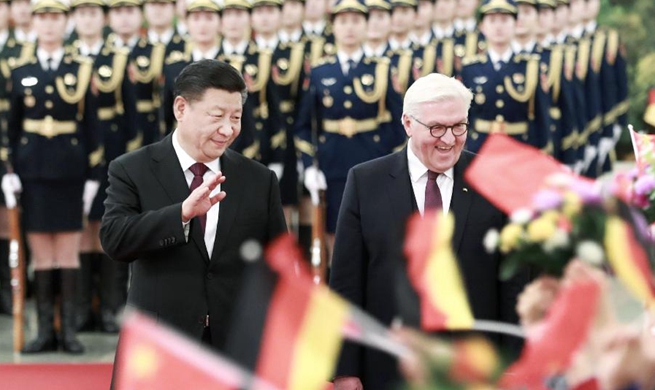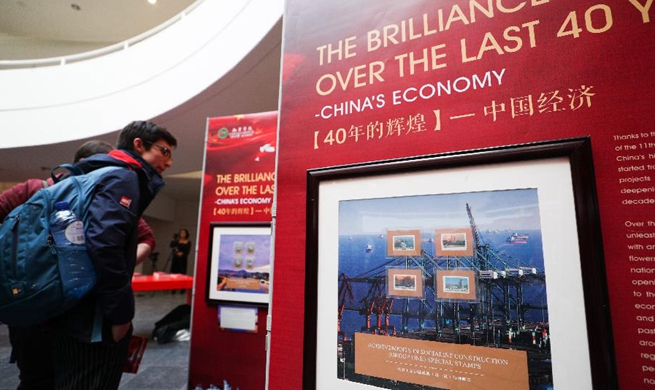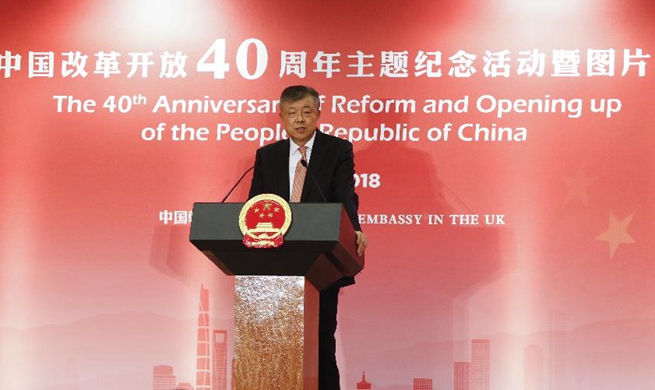BEIJING, Dec. 12 (Xinhua) -- The Chinese currency renminbi (RMB), or the yuan, has taken solid steps in its internationalization thanks to the country's steady efforts to further integrate into the world economy.
The People's Bank of China (PBOC) renewed a reciprocal currency swap agreement with its Ukrainian counterpart earlier this week, allowing the exchange of local currencies between the two central banks for up to 15 billion yuan (about 2.17 billion U.S. dollars), or 62 billion hryvnias, for three years.
Aiming to facilitate bilateral trade and investment with other countries, China has established or expanded such currency swap agreement with an increasing number of other economies.
Malaysia in August extended its swap deal for the third time, and Japan boosted the exchange value to ten times that in the previous agreement in October. In total, China has launched bilateral currency swaps with over 30 countries and regions.
Thanks to China's stable economy and continued opening-up, the yuan is gaining more recognition across the world.
According to a SWIFT report, the yuan's share in global payments stood at 1.7 percent in October, the sixth most-traded currency on the platform.
The International Monetary Fund (IMF) said in its quarterly report that as of the first six months this year, the yuan foreign exchange reserve assets have reached 193.38 billion U.S. dollars, with more than 60 central banks or monetary authorities including the currency into their forex reserves.
"The yuan's internationalization is an inevitable trend as China deepens economic and financial reforms and opens to the rest of the world," PBOC governor Yi Gang said in a signed article earlier this month.
The yuan's global push generally started from pilot yuan settlements in cross-border trade in 2009, as China, a major trading nation, looked to lower transaction costs and smoothen foreign trade and investment.
The yuan's going-global trend picked up pace in 2016 when the IMF added the currency to its basket of the Special Drawing Right, making it the fifth major currency following the U.S. dollar, euro, Japanese yen and British pound.
The inclusion did not immediately boost yuan-denominated payments but helped push the Chinese market, where continued and unwavering opening-up continues to generate numerous business opportunities.
The appetite for the currency soon boomed. Multinationals vied for bigger presence in the promising and enormous market, and overseas investors invested big in yuan assets.
Official data shows overseas investors held 1.75 trillion yuan of Chinese bonds at the end of August, 54 percent higher than a year ago and up for 18 months in a row.
Analysts believe the yuan will hopefully accelerate its global journey.
"Given increasing capital outflows in emerging markets amid global liquidity stress, more and more countries will gradually see greater yuan demand and this is an enormous opportunity for the currency's internationalization," said Yao Yudong, a researcher with the Shenzhen-based Dacheng Fund.
Policy support for the yuan's global drive has also continued.
China has taken measures to further reduce unnecessary restrictions and improve the policy framework on the cross-border use of the currency, including launching crude oil futures in Shanghai, easing restrictions on QFII and RQFII programs for foreign institutional investors.
Financial regulators are also making active preparations for a Shanghai-London stock connect program.
The Bank of China also expressed optimism in a report about the prospects of the yuan's global use, citing favorable conditions including the Belt and Road Initiative and steady financial opening-up.
"It is foreseeable that the yuan's internationalization will continue to see relatively huge potential in the future," BOC said.

















